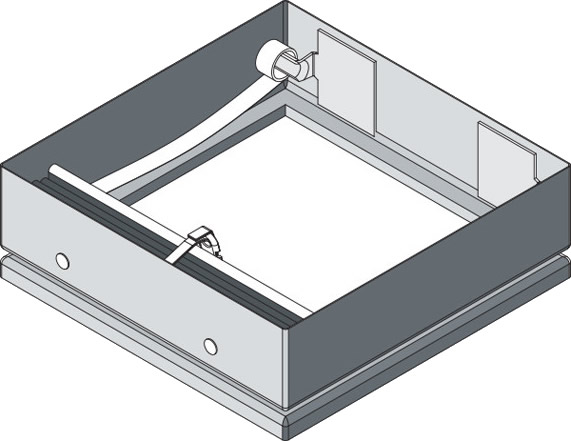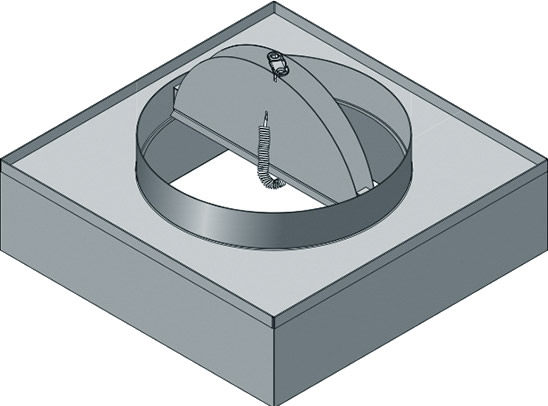Ceiling Radiation Dampers: What They Are and Why They Matter
Ceiling radiation dampers (CRDs) are an essential component of a building's fire protection system. They are designed to prevent the spread of smoke and flames through ceiling penetrations in the event of a fire. While often overlooked, CRDs are critical for protecting the building's occupants and reducing the risk of injury or death. In this article, we'll discuss what ceiling radiation dampers are, why they matter, and how they work. We'll also provide information on how to choose the right CRD for your building and tips for proper maintenance.
What Are Ceiling Radiation Dampers (CRDs)?
Ceiling Radiation Dampers (CRDs) are fire protection devices installed in the ceiling of a building to prevent the spread of fire and smoke through air conditioning and heating ducts. CRDs are designed to activate when exposed to high temperatures, closing off the duct opening and preventing the spread of fire to other areas of the building.
How Do Ceiling Radiation Dampers Work?
CRDs work by using a fusible link, which melts when exposed to high temperatures, causing the damper to close and prevent the spread of fire and smoke through the ductwork. This mechanism ensures that the CRDs only activate in the event of a fire, as they remain open under normal conditions to allow for proper ventilation.
The Importance of Ceiling Radiation Dampers
CRDs are critical for protecting building occupants and preventing the spread of fire and smoke through HVAC systems. Without CRDs, a fire can spread rapidly through a building's ductwork, causing significant damage and endangering the lives of those inside the building. CRDs play a crucial role in containing the spread of fire and smoke, giving occupants more time to evacuate and reducing the risk of injury or death.
CRD Installation Requirements
To ensure that CRDs function properly, they must be installed in accordance with local building codes and regulations. This includes proper sizing and installation, as well as regular testing and maintenance to ensure that the dampers are functioning properly.
Types of Ceiling Radiation Dampers
There are two main types of CRDs: static and dynamic. Static CRDs are installed in ductwork that is not part of the building's air handling system, such as those that provide ventilation for stairwells and elevator shafts. Dynamic CRDs are installed in HVAC ducts that are part of the building's air handling system, and they are designed to close when they detect heat from a fire.
CRD Maintenance
Regular maintenance is crucial for ensuring that CRDs function properly in the event of a fire. Here are some recommendations for CRD maintenance:
- Inspect CRDs at least once a year to ensure that they are functioning properly and are free from damage or obstructions.
- Clean CRDs regularly to prevent the buildup of dust, debris, and other materials that can impede their function.
- Ensure that CRDs are accessible for inspection and maintenance.
- Keep records of inspections and maintenance to ensure that CRDs are up-to-date and compliant with local regulations.
Conclusion
Ceiling Radiation Dampers are critical for protecting building occupants and preventing the spread of fire and smoke through HVAC systems. Proper installation and maintenance of CRDs can help ensure that they function properly in the event of a fire, giving occupants more time to evacuate and reducing the risk of injury or death. Consult with a licensed HVAC contractor to ensure that your building's fire protection system is up-to-date and compliant with local regulations.
Footnotes:
- HVAC: Heating, Ventilation, and Air Conditioning
- Fusible link: A device designed to melt when exposed to high temperatures, used in fire protection systems to activate dampers or other fire protection equipment.
References:
- National Fire Protection Association. (2019). NFPA 90A: Standard for the Installation of Air-Conditioning and Ventilating Systems.
- International Code Council. (2018). International Building Code.
- ASHRAE. (2019). ASHRAE Handbook - HVAC Applications.



